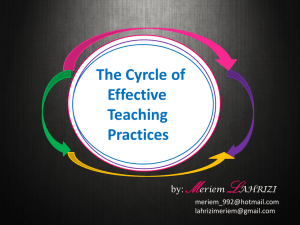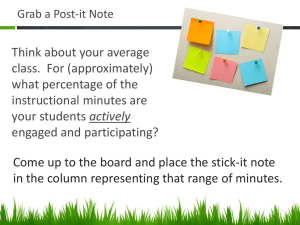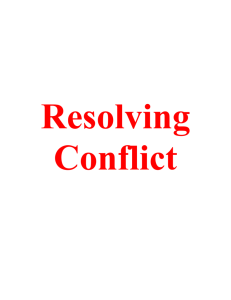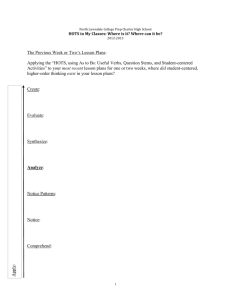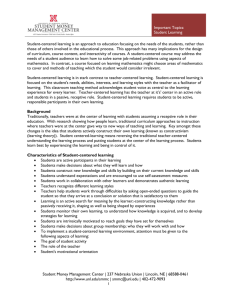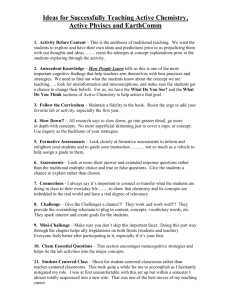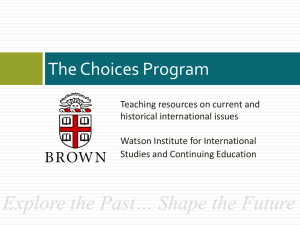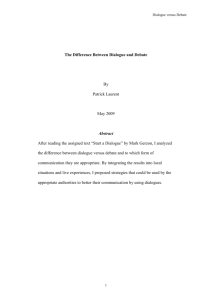Honors Humanities / Mrs
advertisement
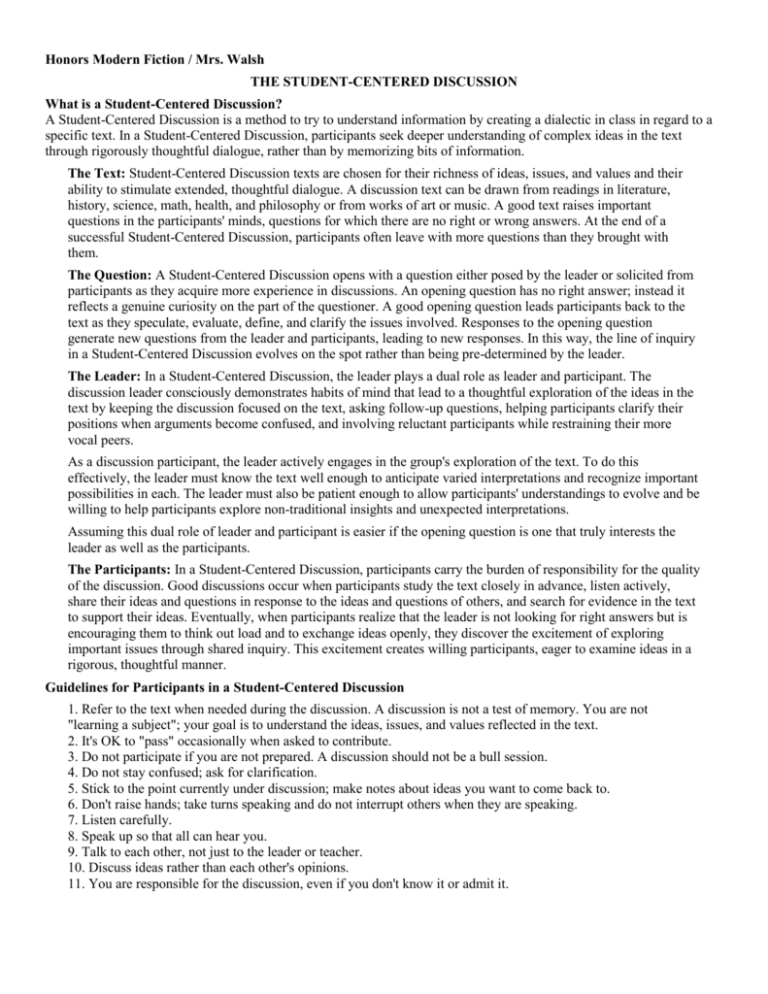
Honors Modern Fiction / Mrs. Walsh THE STUDENT-CENTERED DISCUSSION What is a Student-Centered Discussion? A Student-Centered Discussion is a method to try to understand information by creating a dialectic in class in regard to a specific text. In a Student-Centered Discussion, participants seek deeper understanding of complex ideas in the text through rigorously thoughtful dialogue, rather than by memorizing bits of information. The Text: Student-Centered Discussion texts are chosen for their richness of ideas, issues, and values and their ability to stimulate extended, thoughtful dialogue. A discussion text can be drawn from readings in literature, history, science, math, health, and philosophy or from works of art or music. A good text raises important questions in the participants' minds, questions for which there are no right or wrong answers. At the end of a successful Student-Centered Discussion, participants often leave with more questions than they brought with them. The Question: A Student-Centered Discussion opens with a question either posed by the leader or solicited from participants as they acquire more experience in discussions. An opening question has no right answer; instead it reflects a genuine curiosity on the part of the questioner. A good opening question leads participants back to the text as they speculate, evaluate, define, and clarify the issues involved. Responses to the opening question generate new questions from the leader and participants, leading to new responses. In this way, the line of inquiry in a Student-Centered Discussion evolves on the spot rather than being pre-determined by the leader. The Leader: In a Student-Centered Discussion, the leader plays a dual role as leader and participant. The discussion leader consciously demonstrates habits of mind that lead to a thoughtful exploration of the ideas in the text by keeping the discussion focused on the text, asking follow-up questions, helping participants clarify their positions when arguments become confused, and involving reluctant participants while restraining their more vocal peers. As a discussion participant, the leader actively engages in the group's exploration of the text. To do this effectively, the leader must know the text well enough to anticipate varied interpretations and recognize important possibilities in each. The leader must also be patient enough to allow participants' understandings to evolve and be willing to help participants explore non-traditional insights and unexpected interpretations. Assuming this dual role of leader and participant is easier if the opening question is one that truly interests the leader as well as the participants. The Participants: In a Student-Centered Discussion, participants carry the burden of responsibility for the quality of the discussion. Good discussions occur when participants study the text closely in advance, listen actively, share their ideas and questions in response to the ideas and questions of others, and search for evidence in the text to support their ideas. Eventually, when participants realize that the leader is not looking for right answers but is encouraging them to think out load and to exchange ideas openly, they discover the excitement of exploring important issues through shared inquiry. This excitement creates willing participants, eager to examine ideas in a rigorous, thoughtful manner. Guidelines for Participants in a Student-Centered Discussion 1. Refer to the text when needed during the discussion. A discussion is not a test of memory. You are not "learning a subject"; your goal is to understand the ideas, issues, and values reflected in the text. 2. It's OK to "pass" occasionally when asked to contribute. 3. Do not participate if you are not prepared. A discussion should not be a bull session. 4. Do not stay confused; ask for clarification. 5. Stick to the point currently under discussion; make notes about ideas you want to come back to. 6. Don't raise hands; take turns speaking and do not interrupt others when they are speaking. 7. Listen carefully. 8. Speak up so that all can hear you. 9. Talk to each other, not just to the leader or teacher. 10. Discuss ideas rather than each other's opinions. 11. You are responsible for the discussion, even if you don't know it or admit it. Expectations of Participants in a Student-Centered Discussion Did the Participants... Speak loudly and clearly? Cite reasons and evidence for their statements? Use the text to find support? Listen to others respectfully? Stick with the subject? Talk to each other, not just to the leader? Paraphrase accurately? Avoid inappropriate language, such as profanity or racially-charged slurs? Ask for help to clear up confusion? Support each other? Avoid hostile exchanges? Question others in a civil manner? Seem prepared? What is the difference between dialogue and debate? Dialogue is collaborative: multiple sides work toward shared understanding. Debate is oppositional: two opposing sides try to prove each other wrong. In dialogue, one listens to understand, to make meaning, and to find common ground. In debate, one listens to find flaws, to spot differences, and to counter arguments. Dialogue enlarges and possibly changes a participant's point of view. Debate defends assumptions as truth. Dialogue calls for temporarily suspending one's beliefs. Debate calls for investing wholeheartedly in one's beliefs. In dialogue, one searches for strengths in all positions. In debate, one searches for weaknesses in the other position. Dialogue respects all the other participants and seeks not to alienate or offend. Debate rebuts contrary positions and may belittle or deprecate other participants. Dialogue assumes that many people have pieces of answers and that cooperation can lead to a greater understanding. Debate assumes a single right answer that somebody already has. Dialogue remains open-ended. Debate demands a conclusion. Dialogue is characterized by: suspending judgment examining our own work without defensiveness exposing our reasoning and looking for limits to it communicating our underlying assumptions exploring viewpoints more broadly and deeply being open to disconfirming data approaching someone who sees a problem differently not as an adversary, but as a colleague in common pursuit of better solution. Sample questions that demonstrate constructive participation in Student-Centered Discussions: Here is my view and how I arrived at it. How does it sound to you? Do you see gaps in my reasoning? Do you have different data? Do you have different conclusions? How did you arrive at your view? Are you taking into account something different from what I have considered?
